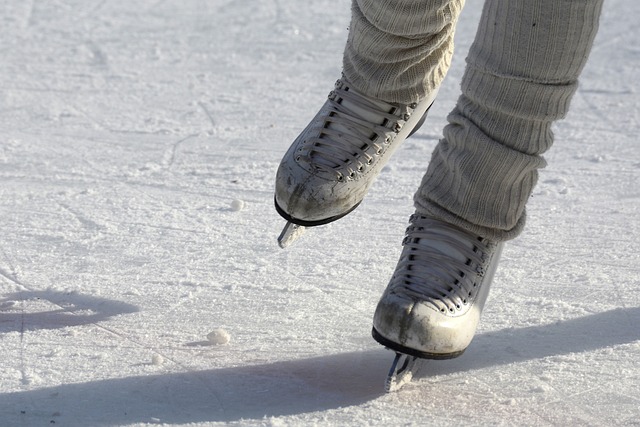A backyard ice rink can provide endless hours of fun and entertainment during the winter months, but it can also raise concerns about its impact on the grass. Many people are curious to know whether or not the installation of an ice rink in their backyard will kill their grass.
In this post, I will delve into this topic and provide a comprehensive understanding of the effects of a backyard ice rink on the grass, as well as alternative options and tips for maintenance and care. Whether you are considering installing a backyard ice rink or are just interested in the topic, this post will provide valuable information that will help you make an informed decision.
What is a Backyard Ice Rink?
A backyard ice rink is a personal ice skating rink that is created in the backyard of a home. It can range in size from a small rink just big enough for a few people to skate on, to a larger rink that can accommodate a group of people. Backyard ice rinks are typically made by clearing snow from a flat area of grass and then flooding it with water. The water is then allowed to freeze, creating a surface that can be used for ice skating.
Backyard ice rinks have become increasingly popular in recent years as a way for families to enjoy outdoor winter activities. They are also a great way to get some exercise and spend quality time with friends and family. The popularity of backyard ice rinks is due in part to the ease of installation and the relatively low cost compared to other winter recreational activities.
Whether you are an experienced skater or just looking to try something new, a backyard ice rink can provide hours of fun and entertainment for all ages. However, it is important to understand the impact that it may have on your grass and how to properly maintain and care for your rink.
How Does a Backyard Ice Rink Affect or Kill the Grass?
The installation of a backyard ice rink can have a significant impact on the grass, especially if proper steps are not taken to protect it. The weight of the water used to flood the rink, as well as the constant movement of skaters, can cause the grass underneath to become compacted and damaged. This can result in dead patches or a complete loss of the grass in the area where the rink is located.
Several factors can affect the extent of the damage to the grass, including the type of grass, the climate, and the amount of foot traffic on the rink. For example, grass that is already stressed or struggling due to lack of water or exposure to extreme temperatures is more susceptible to damage from a backyard ice rink.
While the installation of a backyard ice rink can have a negative impact on the grass, there are steps that can be taken to reduce the damage. For example, using a protective barrier such as a tarp or plastic liner can help to keep the water from seeping into the soil and causing damage to the roots of the grass. Additionally, spreading a layer of sand or gravel over the grass before installing the rink can provide additional protection and help to prevent compaction.
In conclusion, a backyard ice rink can have a significant impact on the grass, but with proper steps, the damage can be reduced. It is important to carefully consider the potential impact on your grass and to take appropriate measures to protect it when installing a backyard ice rink.
Alternative Options for Backyard Ice Rinks
If you are concerned about the impact that a backyard ice rink may have on your grass, there are alternative options available. These options include:
- Artificial Ice Rinks: Artificial ice rinks are made from a synthetic material that mimics the look and feel of real ice. They are a great option for those who want to enjoy ice skating without worrying about the impact on their grass. Artificial ice rinks can be used on any flat surface, including concrete, asphalt, or even a deck.
- Portable Ice Rinks: Portable ice rinks are pre-fabricated rinks that can be set up on any flat surface. They are often made from durable plastic material and come in a variety of sizes to accommodate different spaces. Portable ice rinks are a great option for those who want a rink that can be easily removed and stored when not in use.
- Indoor Ice Rinks: Indoor ice rinks are typically found at ice skating rinks, community centers, and other public facilities. They provide a controlled environment for ice skating, free from the elements and potential impact on the grass.
Each of these alternative options has its own advantages and disadvantages. When selecting an alternative option for your backyard ice rink, it is important to consider your budget, the size of your space, and the level of maintenance that you are willing to undertake. With these factors in mind, you can choose the best option to meet your needs and provide a safe and enjoyable place to skate.
Maintenance and Care for a Backyard Ice Rink
Proper maintenance and care are key to ensuring that your backyard ice rink remains in good condition and is safe to use. Here are 5 steps and tips to keep in mind:
- Regular Maintenance: Regular maintenance is important to keep the rink in good condition. This may include removing snow and ice shavings, resurfacing the rink as needed, and ensuring that the rink is level and free of cracks or rough spots.
- Protect the Rink: Protecting the rink from sunlight and other elements can help to extend its lifespan and keep it in good condition. This can be done by using a tarp or other protective covering when not in use, or by positioning the rink in a location that is shaded from direct sunlight.
- Monitor the Weather: Monitoring the weather is important to ensure that the rink remains safe and usable. If temperatures rise above freezing, the rink may become soft and slippery, making it dangerous to skate on. If temperatures are expected to rise, it is important to remove the rink or take other steps to protect it.
- Keep the Rink Clean: Keeping the rink clean is important to maintain its appearance and to prevent the buildup of dirt and debris that can make the rink slippery. This can be done by regularly sweeping the rink and removing any snow or ice shavings.
- Proper Storage: Proper storage is important to keep your rink in good condition and to protect it from damage. This may include storing the rink in a dry, protected location during the off-season, and covering it with a tarp or other protective covering to prevent damage from the elements.
Conclusion
In conclusion, a backyard ice rink can provide hours of fun and entertainment during the winter months, but it is important to understand the impact that it may have on the grass. Alternative options, such as artificial ice rinks, portable ice rinks, and indoor ice rinks, can provide a solution for those who are concerned about the impact on their grass. Proper maintenance and care are also crucial to ensure that the rink remains in good condition and is safe to use.
Whether you are considering installing a backyard ice rink or are just interested in the topic, this post has provided valuable information to help you make an informed decision. I hope that you have found this information helpful and that it has answered any questions you may have had about backyard ice rinks and their impact on the grass.








